3D Scanning Objects with a Smartphone +123D Catch
Transmogrify: transform, especially in a surprising or magical manner.
The future of everything is 3D and you need to get on that right now. The first step is to download 123D catch from the app store and make an account. Detailed and easy instructions can be found on the official how-to page here: http://www.123dapp.com/howto/catch which I'll summarize briefly. First open the app and swipe right to start a new capture. Follow the on-screen instructions and take a picture while maintaining a careful distance between you and the subject matter to fill in the graph. http://imgur.com/a/yJQlj
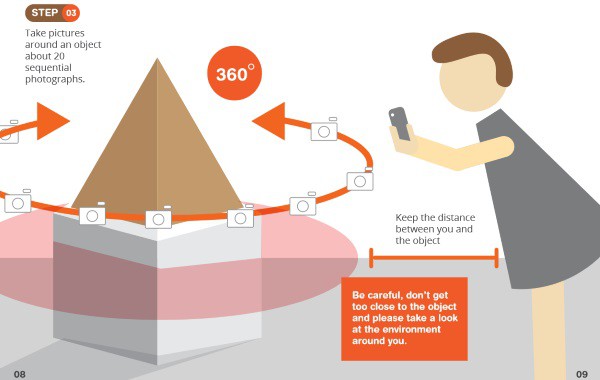
When you have 9+ pictures taken, you can then upload your photos and Adobe cloud is going to take the positional metadata attached with the source images in order to generate the 3D model for you. The result is a downloadable 3D object with high resolution graphics (and high poly) that you can optimize with blender for use in your projects.
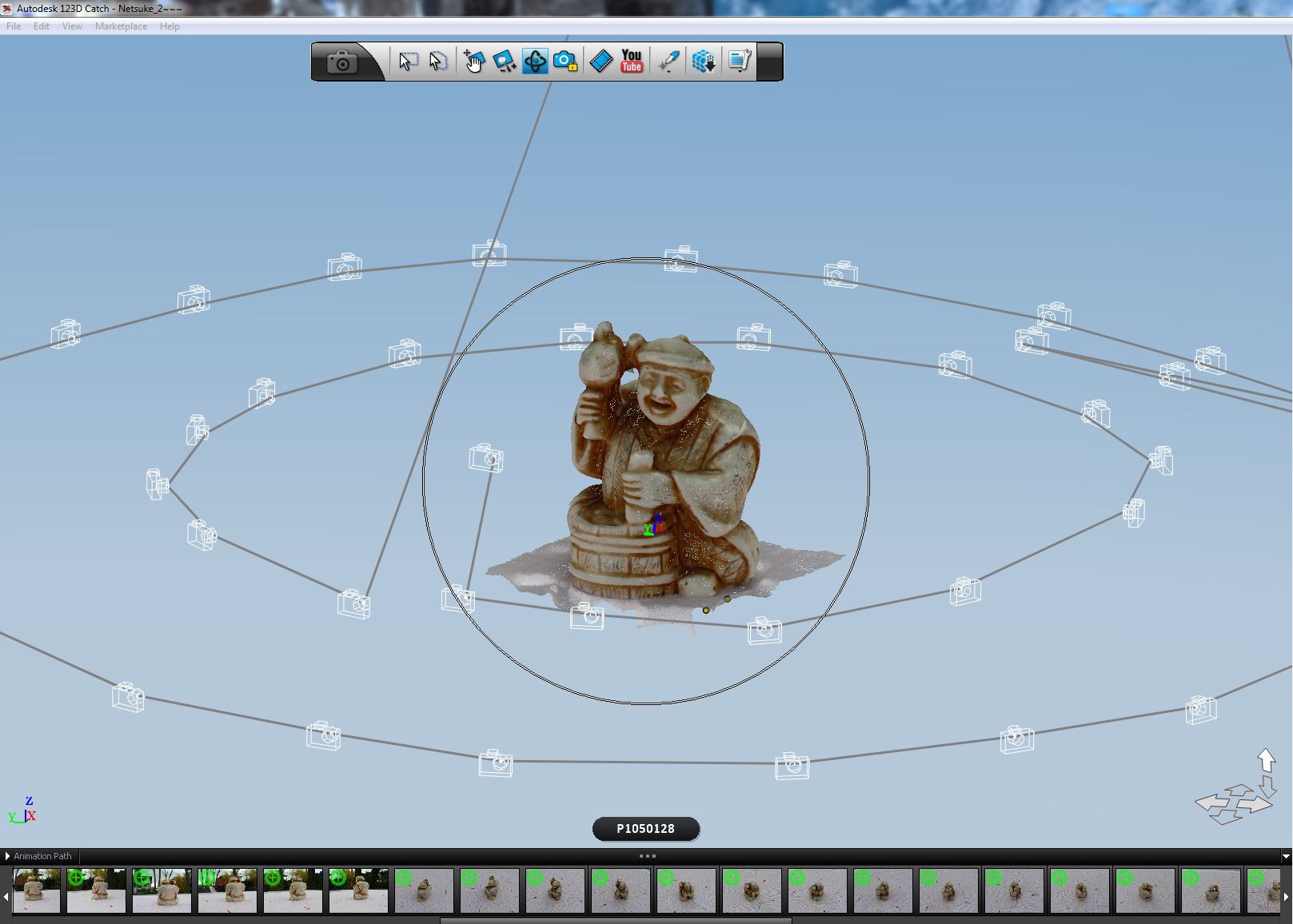
Search for models using the 123D catch gallery or download your own from the website and decimate them to a lower polygon count using Blender.
Trash World

Over time, I collected and organized over 50 photogrammetry scans from 123D catch into a list of the model names adjoined to the IPFS link containing the data files and FireBoxRoom template [https://vimeo.com/235647914]. It's basically the barebones of an IPFS inventory system without the GUI and makes for a quick and dirty pallet. Majority of the photogrammetry scans in my pallet literally consist of garbage because I started to notice a pattern in many VR experiences that often feel sterile of the chaos that reality is littered with.
Trash is pretty interesting subject matter when seen as a carrier of entropy and became a common ingredient in a series that would explore collaging these scans together with other media. I started turning scans into avatars and ghosts so that users can become a trash can or transform into an elaborate scan of an environment that people would hang out in. http://imgur.com/a/4CAoG
Street Art Galleries
https://hackaday.io/project/5077/log/25989-the-vr-art-gallery-pt-1
The walls of this gallery are made by chronologically ordering images that were carved out of a packet capture of public WiFi onto a page. This is a virtual stained glass piece is that is meant to be viewed in VR because of scale. It's currently lacking proper back lighting via emission.

I've always held a strong interest in street art and what it stands for. Moving out to LA has exposed me to crazy amount of inspiring art on a daily basis. I've been creating more WiFi glitch art with neural networks, this time using more powerful algorithms and better hardware. The images extracted are further processed with openCV with facial detection in order to sort images destined for portraiture away from the rest.



The new pieces would need a new kind of gallery. I started to play with the photogrammetry scans and put together a new creation each day. My first attempts became an alley way and ash bowl gallery that I linked together:


Link to video: https://vimeo.com/235649693

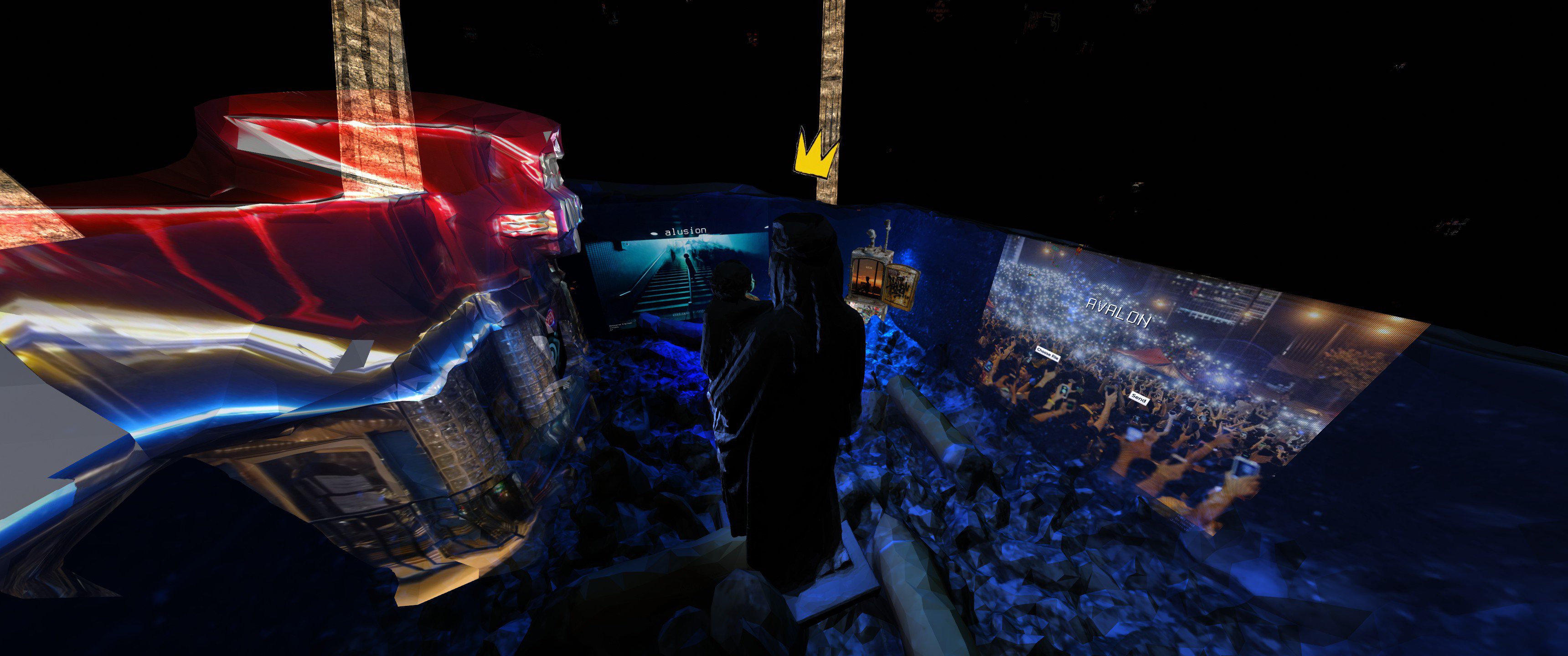
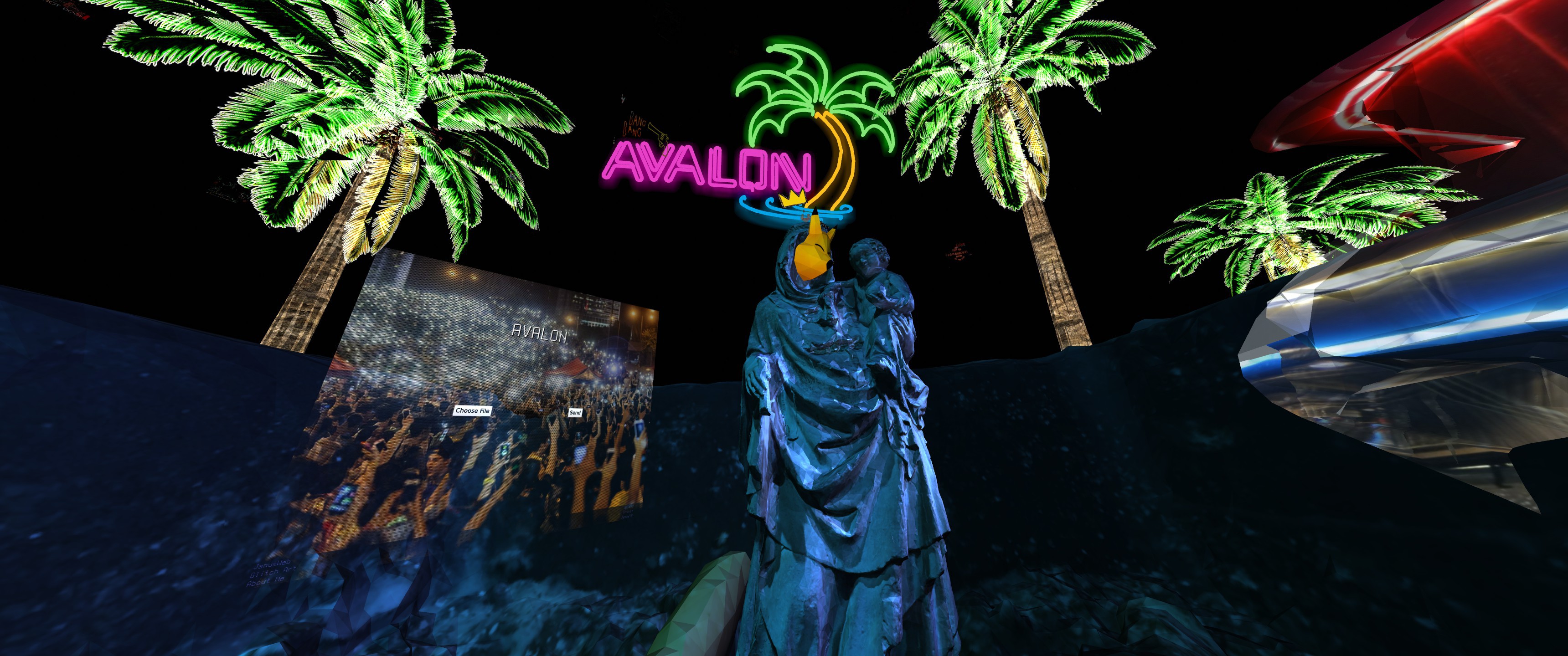
Link to high resolution video: https://vimeo.com/235650190
360 preview: https://ipfs.io/ipfs/QmYcV2k4xKbPW8Q2sfAHXwbtdD8beTyLUE9Zu5EZrTyenW/
I started to experiment with outdoor scans in order to texture the environment with generated art. The larger gallery space provides a good space to visualize the ideal scale that I desire to make art with.
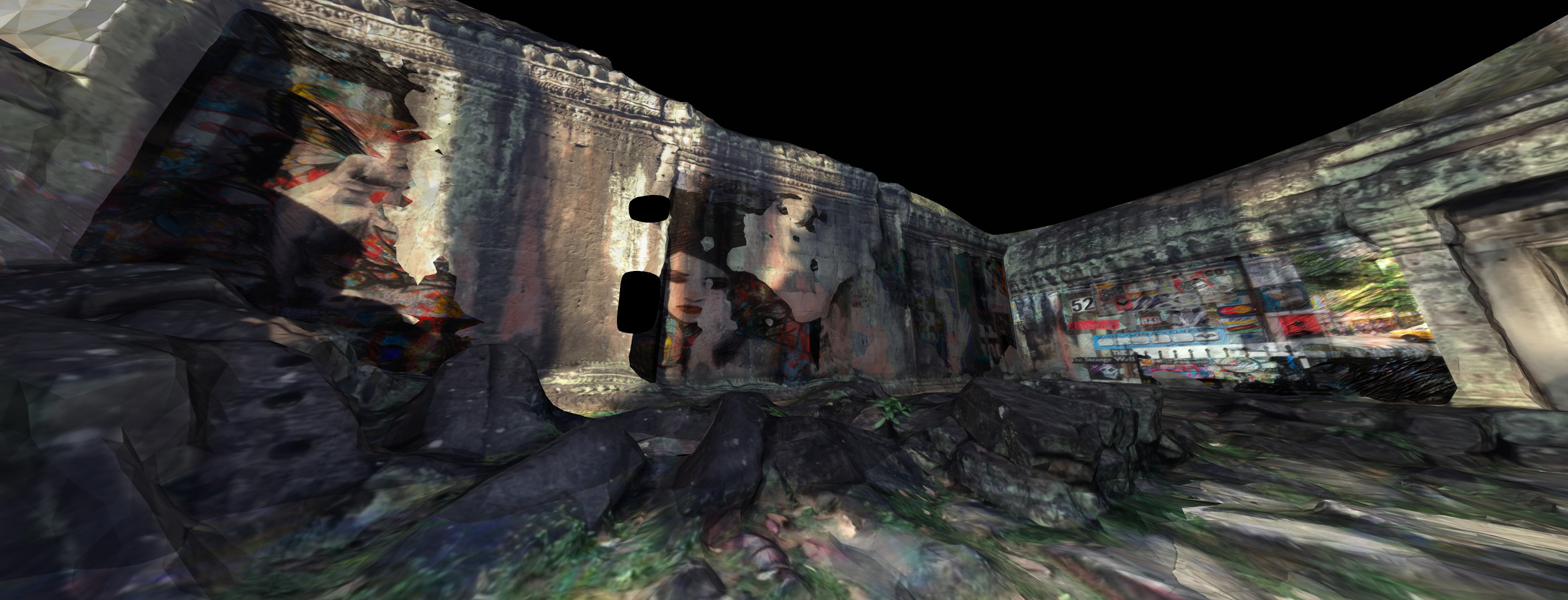
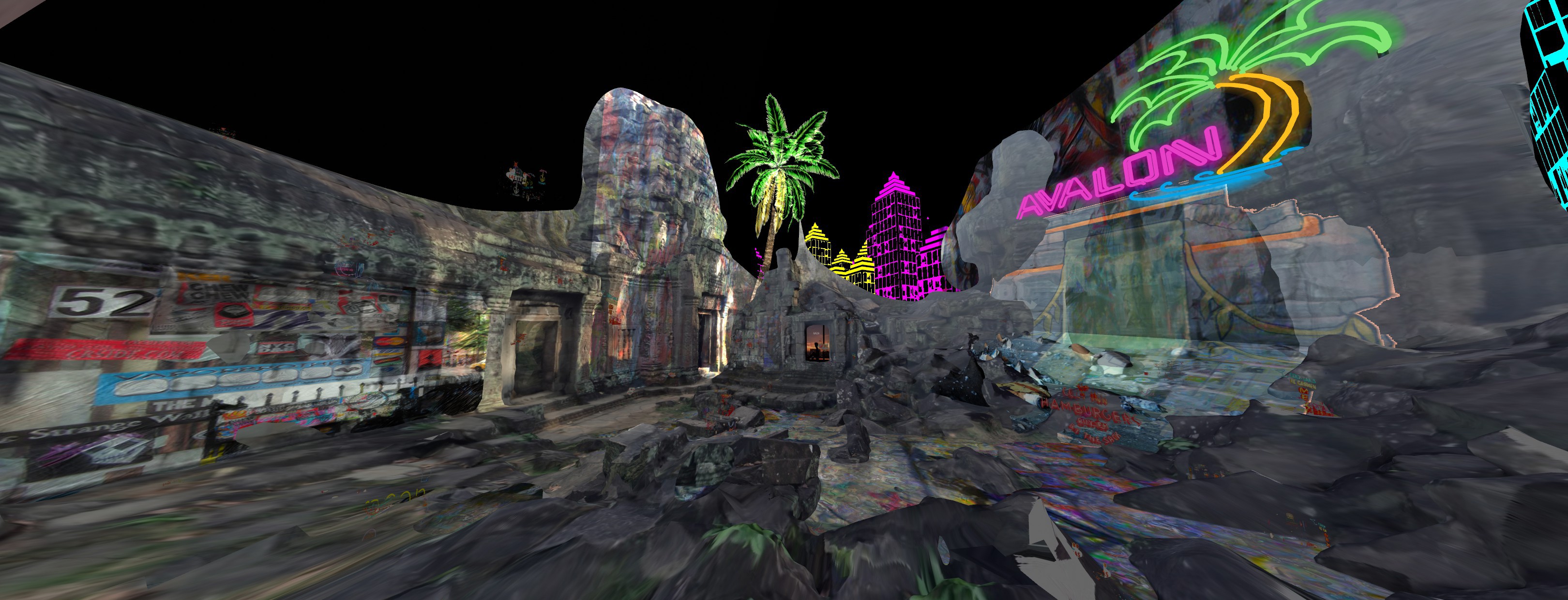
Link to album: http://imgur.com/a/z72uX
Degentrification
I began to seek nostalgic video game levels for gallery space, ripping out models from classic N64 games. Growing up, I remember being completely immersed in playing the Zelda games; I did every quest and unlocked every secret. That feeling of coming home, popping in the game cartridge, and hearing the intro was the best feeling. I grabbed game files from models-resource and started to add my own decorations to places like Hyrule courtyard:

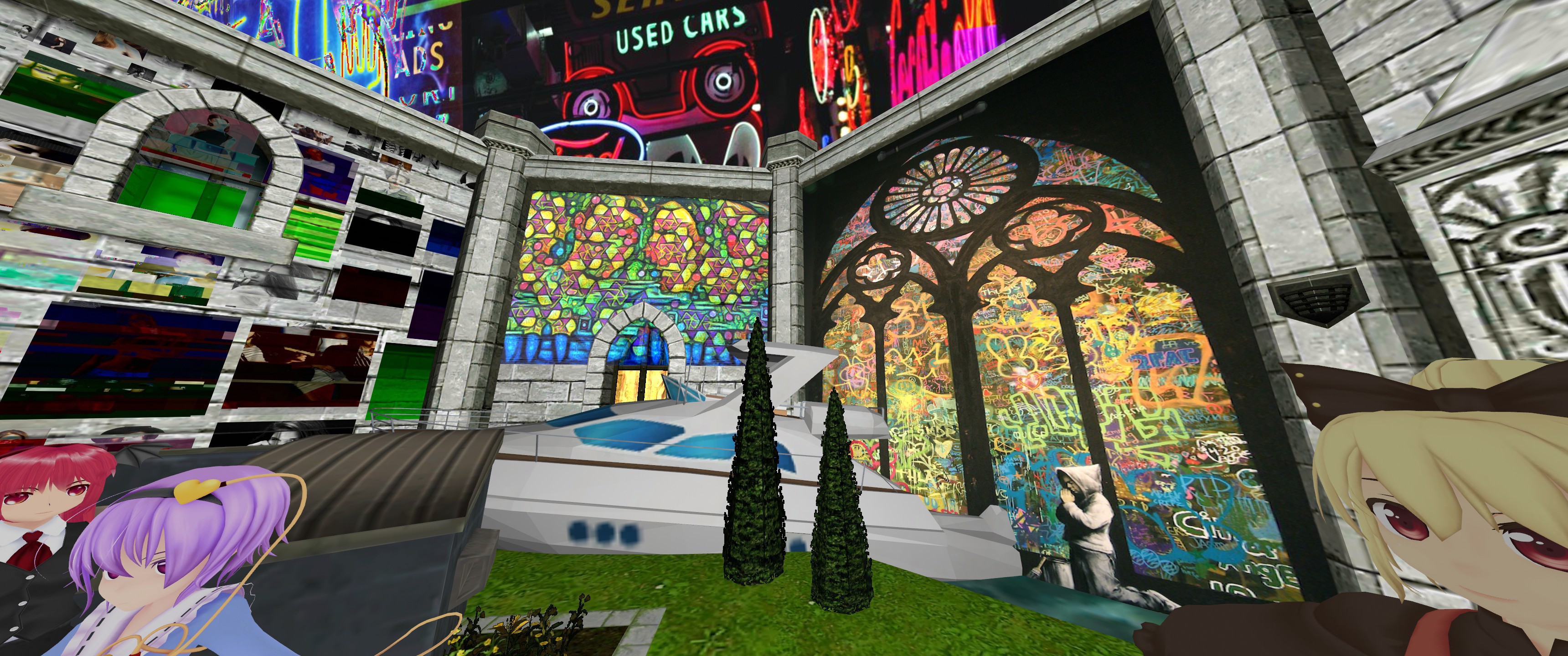
Link to full album: http://imgur.com/a/nhN8I



Link to album: http://imgur.com/a/VsN8f / http://imgur.com/a/iWXX3
Black Sun
I will use the term “augmented space” to refer to this new kind of physical space. ..... In other words, architects along with artists can take the next logical step to consider the 'invisible' space of electronic data flows as substance rather than just as void – something that needs a structure, a politics, and a poetics. - Manovich
Technology advances our ability to capture the world in ever increasing detail and its begs to ask, what if you can turn the entire web and physical world into a giant video game?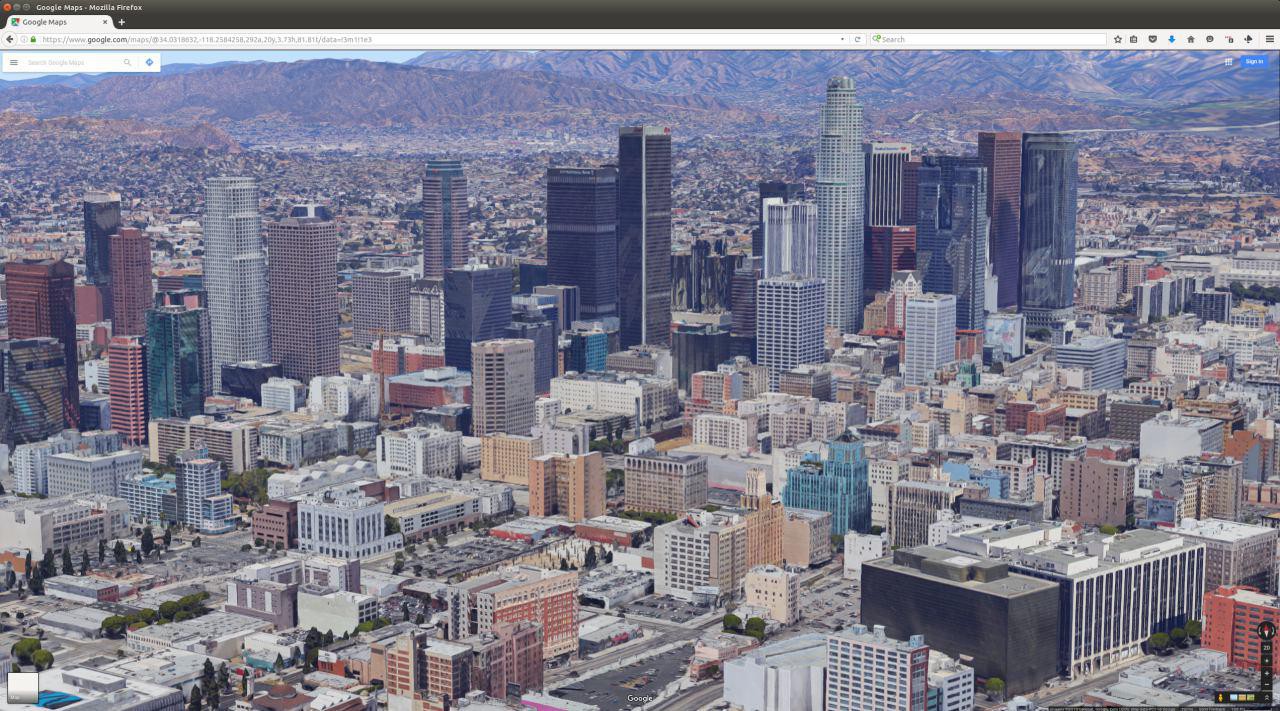
From your web browser right now you can fly around with Google Maps and Google Earth combined into one with excellent 3D reconstruction in cities and neighborhoods.
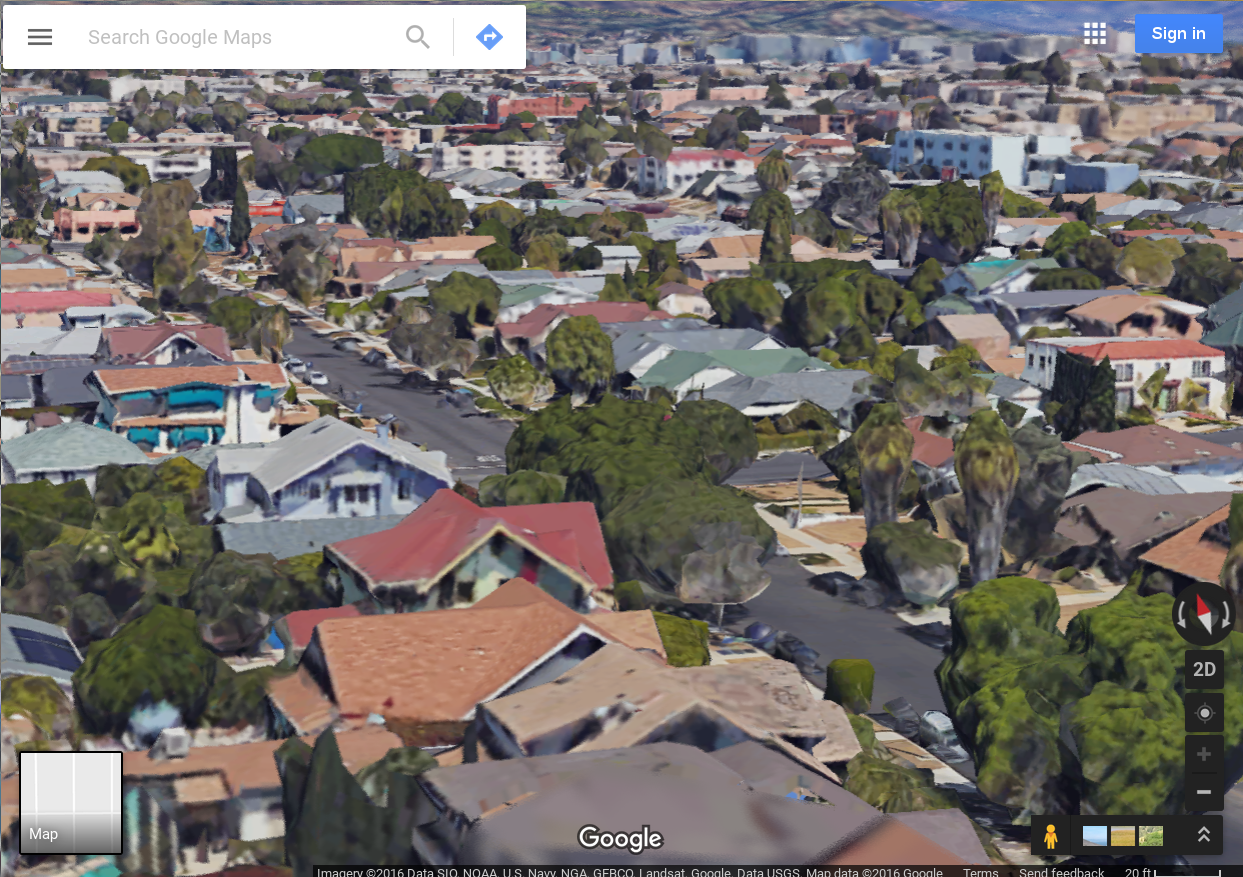 Dead drops are an anonymous, offline, peer to peer file-sharing network
in a public space. USB flash drives are embedded into walls, buildings
and curbs accessible to anybody in public space.
Dead drops are an anonymous, offline, peer to peer file-sharing network
in a public space. USB flash drives are embedded into walls, buildings
and curbs accessible to anybody in public space.
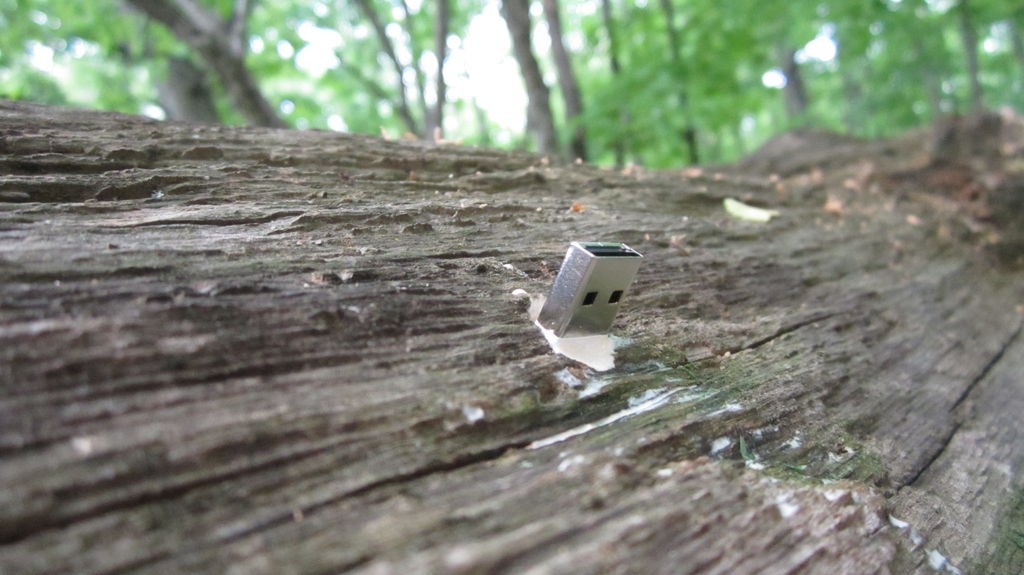
This tradecraft is usedto pass items or information between two individuals (e.g., a caseofficer and agent, or two agents) using a secretlocation, thus notrequiring them to meet directly and thereby maintaining operational security.
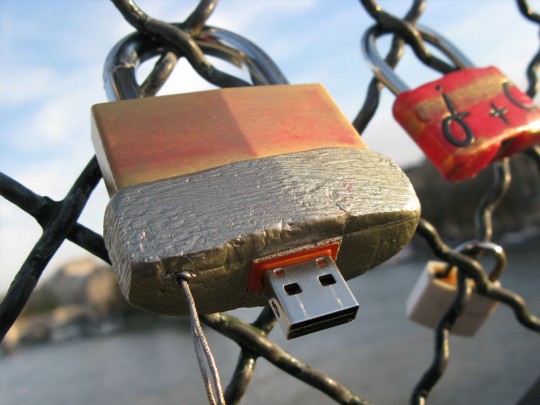
This act of binding information to a location has sparked a whole geocaching movement. By encoding mixed reality into this concept, you then have the power to reprogram the world.
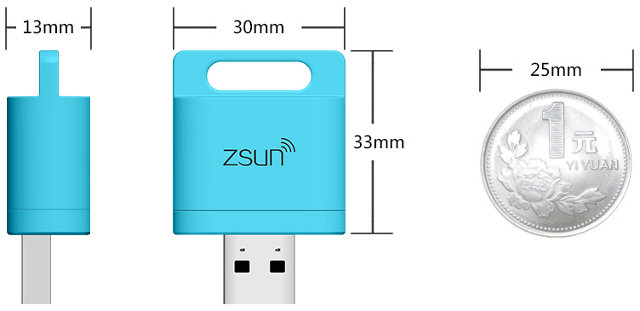
I see an AVALON node as like or fountain of energy that overlays the physical area and paints the skies into a reality hallucinated by others before you while connected to those around you. This is also where the glitch art comes from.

Look at the WiFi networks around you and just imagine how many of these signals we are constantly swimming in everyday. The world has a canvas, pick up a brush and start painting.
WebVR is an open standard that lets content creators build and distribute VR experiences directly to consumers, at scale, with minimum friction and maximum access. Instead of having to go through heavy downloads and setup, users can simply click a link or join a network to into the experience.
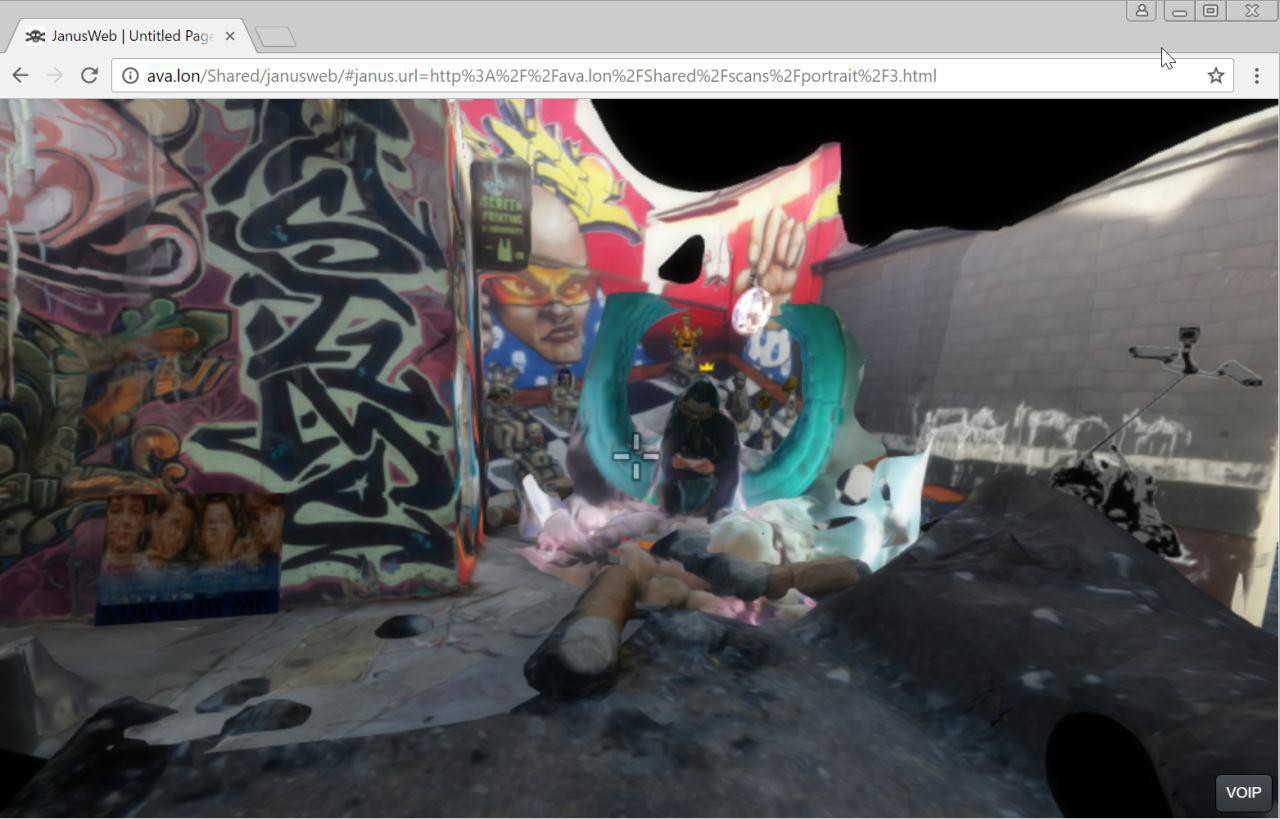
 alusion
alusion
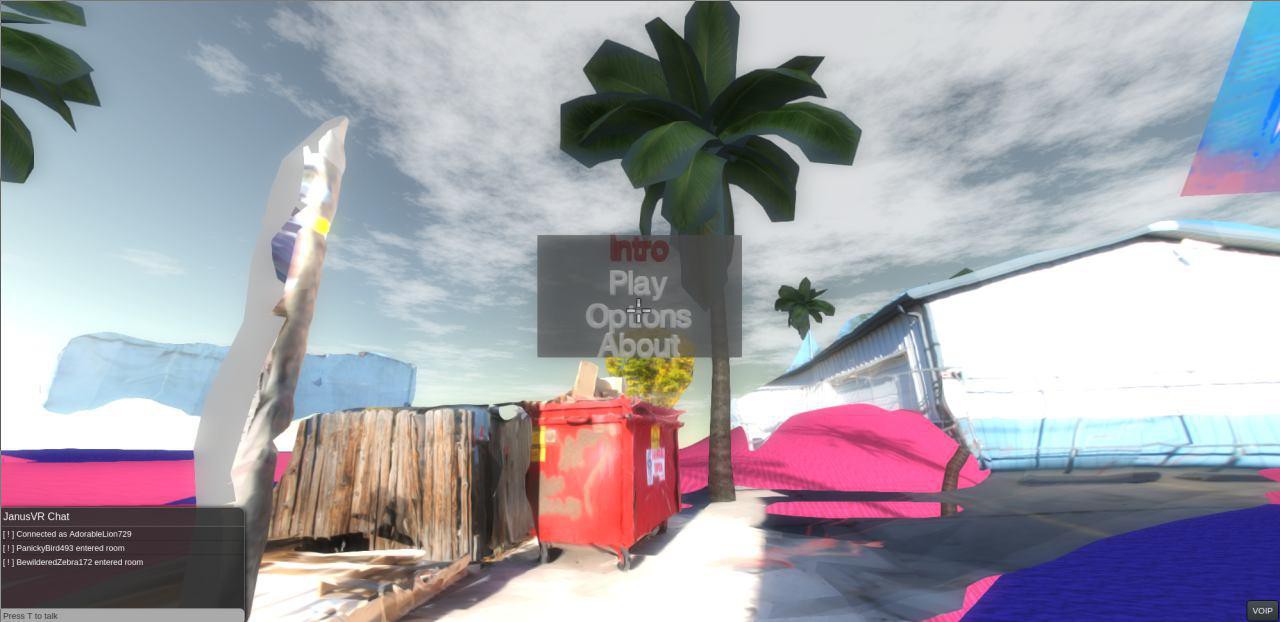
Discussions
Become a Hackaday.io Member
Create an account to leave a comment. Already have an account? Log In.